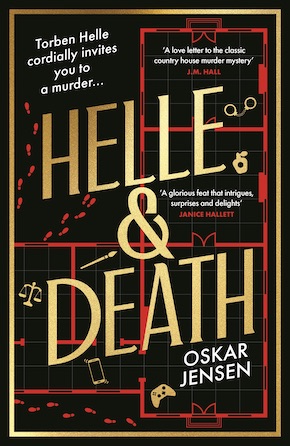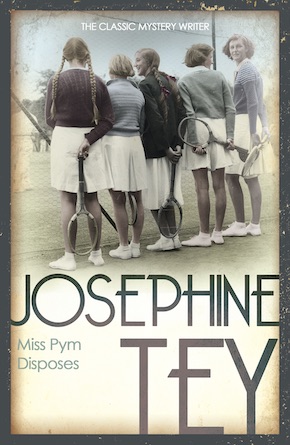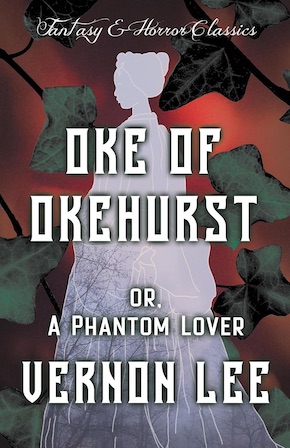Locked-room mysteries
by Oskar JensenBack in the day, a ‘locked-room mystery’ meant exactly that – a murder behind not only closed, but locked doors, ostensibly impossible to commit, and thus a mechanical conundrum to unpick. Think Gaston Leroux’s Le mystère de la chambre jaune (1907), or even Arthur Conan Doyle’s personal favourite of all his Sherlock Holmes stories, ‘The Adventure of the Speckled Band’ (1892) – deeply implausible, wonderfully atmospheric, equal parts Gothic horror and logic puzzle. Tastes change, however, and now the ‘locked-room’ genre generally refers to a closed circle of suspects, usually gathered together in a single house, one (or more) of whom has done in one (or more) of the others.
This shifts our focus from the material to the psychological; to a hot mess of characters bumping up together. It also allows for a sense of holiday, escapism, and frequently some truly sumptuous architecture. My debut novel Helle & Death is just such a mystery, paying homage to the greats, with its snowed-in reunion in a remote country mansion. And there are many precedents to which I’d like to doff my hat.
Now, the most memorable location for not one, but a succession of whodunnits, is surely Hogwarts School of Witchcraft and Wizardry, but they’re never quite locked-room cases. And my favourite Golden Age author, Dorothy L. Sayers, seems deliberately to have shied away from the sub-genre, except perhaps in minor short stories like ‘The Necklace of Pearls’ (1933). But here are ten other full-on locked-room mysteries that any right-thinking person should love to shut themselves into.
‘The Absence of Mr Glass’ by G.K. Chesterton
For auld lang syne, I’ll start with a case that does really take place within a locked room. This delightfully satirical story – a clear send-up of Sherlock Holmes – is an elaborate joke upon the detective, who makes the error of reading far too much into the clues behind the door. Short, sweet, and unforgettable. It’s also a constant reminder of how silly the whole business of detection can be.
Look, I know And Then There Were None is a crashingly obvious choice, but then it is also the best, with its rich cocktail of wrong ’uns lured to an isolated island and gradually picked off.”
And Then There Were None by Agatha Christie
I was tempted to plump for Hercule Poirot’s Christmas, which manages to be a locked-room mystery in both senses of the word, and hinges on how much blood surrounds the victim. But that novel is let down by the sheer amount of exposition you have to wade through at the beginning. Or I could have had Death in the Clouds, Evil Under the Sun, Murder on the Orient Express… Look, I know And Then There Were None is a crashingly obvious choice, but then it is also the best, with its rich cocktail of wrong ’uns lured to an isolated island and gradually picked off. Above all, I’ve chosen it because of how I first encountered the story – not as a novel, but at a reading, with friends, of the stage version that appeared four years later, lightly reworked. I’d hate to give spoilers but, for those who know the plot: I didn’t, and I was playing the judge. It was quite the ride.
A Man Lay Dead by Ngiao Marsh
For her debut whodunnit, the great Ngaio Marsh opted for a classic locked-room case: a country house party full of eccentrics, keenly observed by the Watson character, journalist Nigel Bathgate. It’s a hoot, and at times deeply absurd, as these things should be, as well as loaded with ambience and suspense, everyone watching everyone else. It’s also an early example of that notorious sub-sub-genre, where a murder mystery party goes wrong. The house guests play ‘The Murder Game’, a pursuit very much in vogue at the time of its writing, which naturally results in a fatal stabbing. And it’s a true game for the reader, who gets to puzzle out timings, motives, which voice can be heard at what time… I even found myself wondering if the ebullient Russian, Dr Tokareff, really was singing to himself, or employing a gramophone, à la Holmes in – but no; spoilers, spoilers…
Miss Pym Disposes by Josephine Tey
If Harry Potter doesn’t count, maybe this school story doesn’t either – or rather, story at a PE teachers’ training college. People can get in and out, the location is not sealed. But it’s just such a brilliant novel, as are so many of Tey’s; she really was a supremely good writer, whatever her other shortcomings. And what better setting for the ramping up of grudges, desires, motives of all kinds, than a single-sex institution at the end of the academic year? This verges into literary fiction, not just by dint of its prose stylings, but because the murder happens so late – almost at the end – and we are challenged to solve it more in retrospect than as events unfold. It all rings horrifyingly true, the characters (especially the titular Pym) are divine, and – murder aside – the reader, like Pym, ends up wanting nothing more than to set aside their routine affairs, and linger in this lovely place for the length of a long hot summer. A joy!
‘The Mistletoe Murder’ by P.D. James
James was an absolute master of her craft, and herself pays homage to an earlier age in this finely turned short story. Set at Christmas, it is deeply preoccupied with the past, with nostalgia, with revisiting something from long ago in the protagonist’s own experience. We get a proper country house mystery, but through a self-consciously sepia lens, the focus of which is closely concentrated upon a very small, very tight circle of suspects. Best read at Christmastime, this is an exquisite little study that feels curiously personal to its author, and is easily devoured in a single sitting.
‘Midnight’ by Russell T. Davies
Not a novel, but a 2008 episode of Dr Who – work with me here. ‘Midnight’ was adapted into a stage play, and it’s easy to see why: it’s all dialogue, rather than action, and takes place entirely within the single sealed carriage of a shuttle on a deadly planet. In a tradition stretching back to the eighteenth century at least, a closed form of public transport is used to assemble a cast of disparate strangers, who swiftly find themselves at odds when a malevolent intelligence appears to infiltrate the craft and possess one of the characters. Cue paranoia, group think, all the good stuff, and it’s up to The Doctor to try – unsuccessfully – to prevent any deaths. It’s far from an original concept, but it borrows its elements beautifully. There’s some knocking that’s right out of Macbeth. And the horror generated by the unknown being on the inside is an age-old classic, executed to perfection. While we’re on the subject of television, The Traitors is the obvious gamification of the concept, while Dr Who gives us endless mysteries contained within fabulous houses, of which Stephen Moffat’s ‘Blink’ (2007) is another acknowledged masterpiece, with good reason.
Poe’s genius resides not just in the evocation of place and emotion, but in the personification of that Death making the silent, implacable killer all but tangible.”
‘The Masque of the Red Death’ by Edgar Allan Poe
It’s now hard for me fully to disentangle this from Margaret Atwood’s bizarre recreation of this story during the pandemic, as shown on the BBC’s Front Row, with characters made from old loo rolls. We all did some strange things during that time. And of course, lockdown was the perfect time for this macabre tale of a prince and a plague, and a sealed castle of guests attempting to avoid infection by the titular and fatal Red Death. Poe’s genius resides not just in the evocation of place and emotion, but in the personification of that Death – not quite incarnate – making the silent, implacable killer all but tangible. Much more a fable or horror story than a whodunnit, it is nonetheless the ultimate locked-room story – and reveals the folly of attempting to lock the door in the first place.
‘Oke of Okehurst; or, A Phantom Lover’ by Vernon Lee
You may have noticed that, as this list progresses, it grows more unorthodox. At least I listed a bunch of Agatha Christies early on, but I’m assuming you’ve read those. Here we have another nineteenth-century Gothic tale that is in no way a murder mystery. But I just couldn’t leave it off the list, because it does the historic country house, sense of foreboding, and closed cast of suspects so much better than practically any out-and-out detective story I can think of. Vernon Lee, the pseudonym of Violet Paget, was a quite wonderful stylist and writer of short fiction, a precursor of other greats with a similar taste for the baroque such as Karen Blixen and Angela Carter. We have mystery and motive and all that jazz, and the whole thing is a perfect introduction to Lee’s hauntingly beautiful works.
‘The Mezzotint’ by M.R. James
Another ghost story? Ah, but this one is also a piece of crime fiction in which we, along with the protagonists, are slowly invited to solve a mystery of revenge and retribution featuring at least two untimely deaths. It just so happens that the clues are either bibliographic or supernatural – every time we catch a glimpse of the titular print, the landscape before us, featuring another truly excellent country house, has changed a little. We are powerless to prevent the crime, the tragedy, occurring before our horror-struck gaze. But we can’t look away, and thus we come to understand. It’s James at his most minimal and most meticulous. Best consumed aurally, as read by the peerless Sir Michael Hordern.
The Last House on Needless Street by Catriona Ward
Time to bring things up to date at the end. There are few delineators of place and atmosphere who can touch Catriona Ward, which makes this study in unreliable narration such a haunting and powerful tale. It’s a murder mystery, but not of the old-school variety – instead this is concerned with more modern dystopias of mental health, loneliness, social atomisation and suspicion. It’s also a deeply redemptive and heart-warming story in its own discomfiting way, which is why I love it. And at its centre is this locked house and its inhabitants, to which our access as reader is both privileged and partial. It’s almost impossible to talk about in detail without revealing too much, but few novels are so intimately concerned with what happens behind locked doors, both literal and metaphorical.
—

Oskar Jensen writes crime, literary, historical and children’s fiction, as well as non-fiction focusing on the history of song and street culture. He read his three degrees in History at Christ Church, Oxford, before taking up postdoctoral fellowships in London and Norwich. In 2023 he was shortlisted for the Wolfson History Prize. A NUAcT Fellow at Newcastle University, he makes regular appearances on BBC Radios 3 and 4. Helle & Death is published by Viper Books in hardback, eBook and audio download.
Read more
oskarcoxjensen.com
@oskarcoxjensen
@ViperBooks
Author photo by Chloe Rosser




